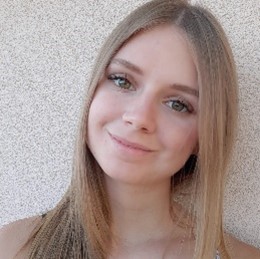27–30 October 2024 | Budapest, Hungary
- Nicole Eder-Nesvacil, Physicist, Medizinische Universität Wien, Vienna (AT)
- Panagiotis Papagiannis, Physicist, National and Kapodistrian University of Athens, Athens (GR)
Brachytherapy is continually evolving with advancements in technology. The ESTRO Advanced Physics for Brachytherapy 2024 course provided an exceptional learning opportunity for professionals looking to deepen their expertise in this specialised field. Guided by course directors Nicole Nesvacil and Panagiotis Papagiannis, the programme delivered a comprehensive blend of theory and practice. As a recent attendee, I am pleased to share insights into this useful event.
I am a young medical physicist in Hungary. I earned my master’s degree from the University of Technology and Economics in Budapest and am currently pursuing my PhD. Since 2020, I have been working at the National Institute of Oncology in Budapest. This was the third ESTRO course that I attended as an in-training medical physicist specialising in clinical radiophysics. I was drawn by the promise of advanced knowledge and the chance to learn from leading professionals in the field, who included internationally renowned experts such as Luc Beaulieu, Mark Rivard and Åsa Carlsson Tedgren. This four-day intensive programme is designed for medical physicists and radiation oncologists eager to refine their understanding of imaging, dose calculation, optimisation, and quality management in brachytherapy. The curriculum combines theoretical insights with hands-on practical sessions.
Among the various sessions, two stood out for me for their impact:
- Imaging Techniques for Treatment Planning: the sessions on 3D-imaging modalities, which were led by Associate Professor Nesvacil, offered deep dives into quality-assurance processes and the integration of advanced imaging such as CT, MRI and ultrasound. These discussions clarified the pivotal role of imaging in the precise placement of catheters and applicators.
- Dose Calculation Innovations: Prof Papagiannis’s presentation on Monte Carlo simulations and advanced algorithms such as Acuros and alternating conditional expectations highlighted significant progress in the achievement of accurate dosimetry. These techniques offer practical ways to overcome limitations in TG-43-based calculations.
The practical sessions provided chances to use planning systems from Varian and Elekta, and so bridged the gap between theory and clinical application. Collaboration with peers during these workshops further enriched the experience.
Key takeaways:
- Advanced imaging and dose calculation techniques must follow protocols in order to be integrated seamlessly into routine clinical workflows.
- Implementation of best practices in quality management and effective addressing of uncertainties in brachytherapy ensure precise and reliable treatment delivery.
- Networking with peers and faculty fosters innovation and shared problem-solving.
This course surpassed my expectations, and it equipped me with actionable skills that I can use to enhance patient care in clinical practice. I encourage colleagues, whether seasoned professionals or new to the field, to seize the opportunity to attend. To anyone contemplating attending their first ESTRO course, I highly recommend the Advanced Physics for Brachytherapy programme.

Enikő Koszta
Medical physicist
National Institute of Oncology
Budapest, Hungary
koszta.eniko@oncol.hu